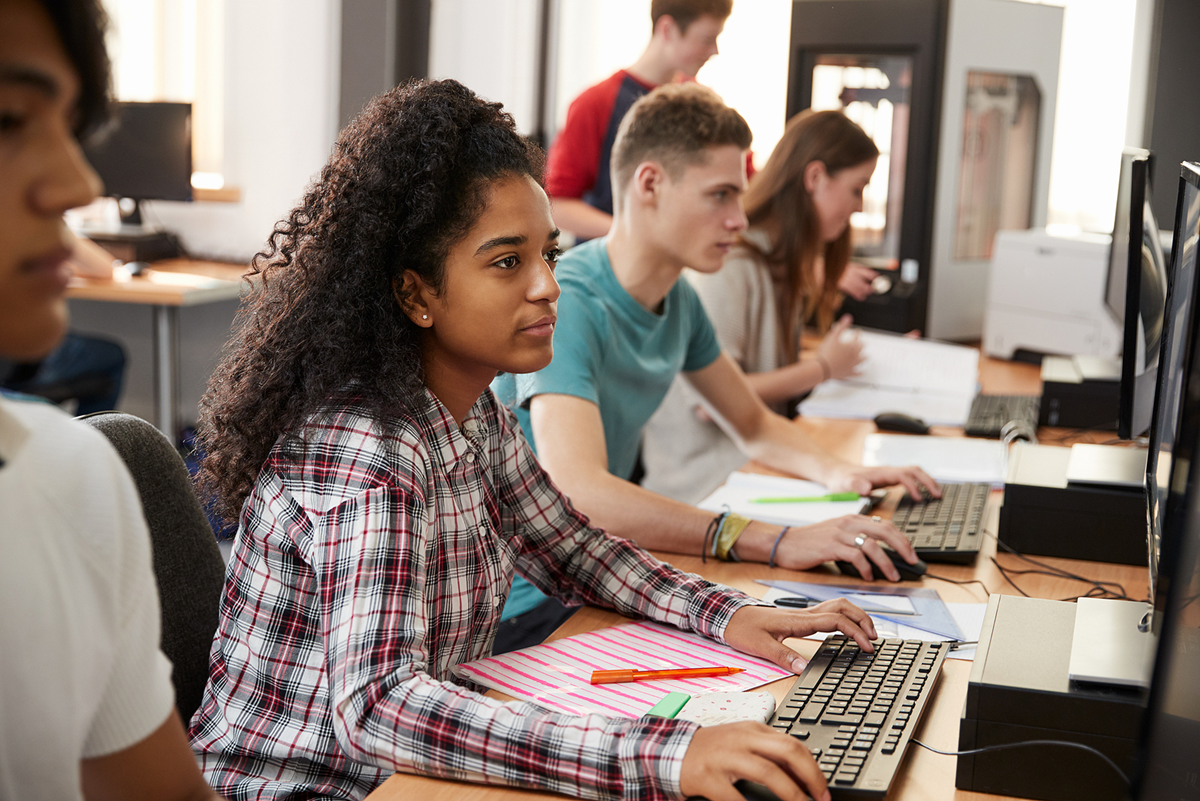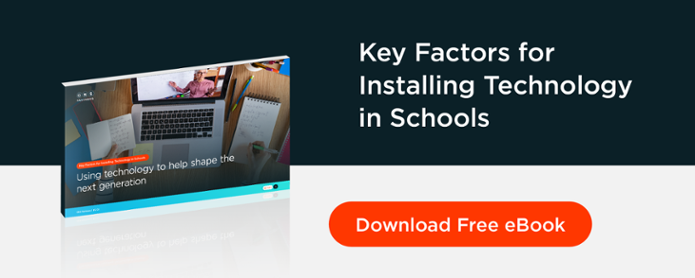What Kinds of Technology Go into a Robust School Infrastructure?

Schools are beginning to implement more technology into their classrooms and curriculums. Nearly 95% of teachers use technology in the classroom nowadays in some capacity. This has had great success, with the constant evolution of technology providing limitless resources for learning. In fact, 84% teachers report using the Internet successfully to find engaging content for their students, and students can easily access information while also learning critical digital skills.
Though most schools are embracing integrating technology into their classrooms, this new development does leave some questions. Because “technology” is such a broad word, one of the biggest questions is:
What kind of technology should schools implement?
Technology can be a wonderful tool to improve teaching and learning. But within the school infrastructure, what technology does this include? Besides workstations like computers and laptops, what does a school really need to have a complete and successful technological integration? Some examples of these necessities are:

- Access to fiber optics. Fiber is the fastest connection out there and it is quickly replacing other connections like coax cables. Fiber uses light to transmit data and as every physics teacher knows, nothing can go faster than light. In order to have the fastest internet and network, schools need fiber.
- Ethernet supply to access points. Access points connect the Wifi devices in a room to a wireless local area network and then project a Wifi signal in that space. While we are quickly switching over to wireless devices, the access points still need a wired infrastructure, which is where the ethernet cabling comes in. Ethernet cabling is also pertinent for many devices like servers, printers, and some workstations.
- Fast, reliable Wifi. In order for technology to help rather than hurt classroom environments, schools need to invest in fast, reliable Wifi. Though high quality Wifi may cost more initially, it will be far smoother and more effective for the teachers and students. After all, it’s already challenging for teachers to get through everything they need to teach in their curriculums, and they don’t have time to troubleshoot if technological devices are failing due to slow Wifi. Investing in fast Wifi will help students learn much more thoroughly and efficiently.
- Personal phone and laptop for every student. By giving each student their own phone and laptop, students can supplement their learning through videos, articles, educational games and other Internet resources both at school and at home. This can teach students independent learning, because they have the power to seek out information themselves, but also collaborative learning with their fellow students and their teachers through shared sites and documents. Providing students their own phones and laptops will also teach them digital proficiency, which is becoming more and more important in the job market. Overall, personal technological devices will set students up for their futures.
- Apple TVs or Smartboards. Apple TVs or Smartboards are important tools for teachers to successfully implement technology in their classes. Having either an Apple TV or a Smartboard installed at the front of the classroom will allow teachers to project the plethora of information on the Internet to all their students. And by using these devices to project information—such as videos, games and images—rather than sending it to students’ individual computers, teachers can utilize technology in a collaborative, communal way. Teachers won’t have to sacrifice a robust learning environment for important technological tools. They’ll be able to seamlessly integrate the Internet’s fascinating content into their teaching, while maintaining an engaging class discussion or a lecture.
- Servers to store and backup data. Unfortunately, one of the pitfalls of technology is that technological systems fail and data can be lost. Luckily, the solution to this is to invest in a server that can automatically backup files and data. This way, if the school’s data is ever lost—or even stolen—it can return to business, administrative, and teaching duties quickly. This will ensure that students don’t lose any valuable class time and keep all the students private information safe.
- Printers. This may seem obvious, but high quality printers are crucial pieces of technology for schools. Printers can help with key administrative tasks that keep schools running, such as forms or fundraising and promotional materials. Printers can also assist when it comes to teaching, as teachers can access physical examples of concepts that they’re teaching.
Importance of investing in all of this technology
This may seem like a lot of technology for schools to invest in. However, by having a full technological system from servers to switches and proper cabling, teachers can leverage the resources of technology without having to worry or troubleshoot. A strong foundation of technology is crucial for using technology successfully, especially because the work that schools do is so important. Investing in each of these technological necessities in the beginning will ultimately save schools resources and money in the long run. And by investing properly in modern technology, schools will improve student engagement and retention in their classrooms.
We know that teachers already do enough without putting on the "technology guru" hat, so we are here to give professional input. Learn how you can implement modern technology in your classroom with our Educational IT Services. We help educators find affordable solutions to augment teaching in their classrooms.



